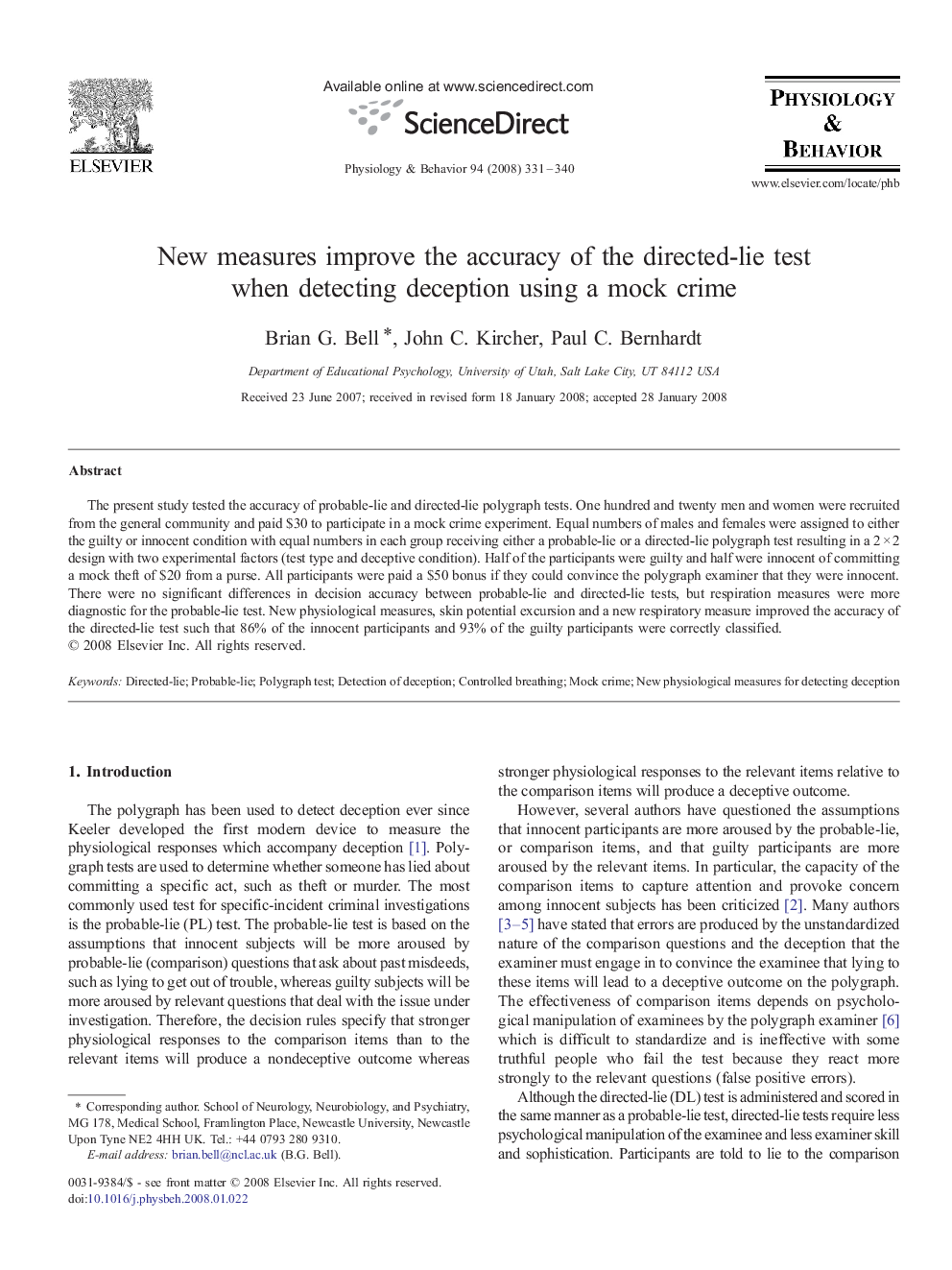| Article ID | Journal | Published Year | Pages | File Type |
|---|---|---|---|---|
| 2845412 | Physiology & Behavior | 2008 | 10 Pages |
The present study tested the accuracy of probable-lie and directed-lie polygraph tests. One hundred and twenty men and women were recruited from the general community and paid $30 to participate in a mock crime experiment. Equal numbers of males and females were assigned to either the guilty or innocent condition with equal numbers in each group receiving either a probable-lie or a directed-lie polygraph test resulting in a 2 × 2 design with two experimental factors (test type and deceptive condition). Half of the participants were guilty and half were innocent of committing a mock theft of $20 from a purse. All participants were paid a $50 bonus if they could convince the polygraph examiner that they were innocent. There were no significant differences in decision accuracy between probable-lie and directed-lie tests, but respiration measures were more diagnostic for the probable-lie test. New physiological measures, skin potential excursion and a new respiratory measure improved the accuracy of the directed-lie test such that 86% of the innocent participants and 93% of the guilty participants were correctly classified.
